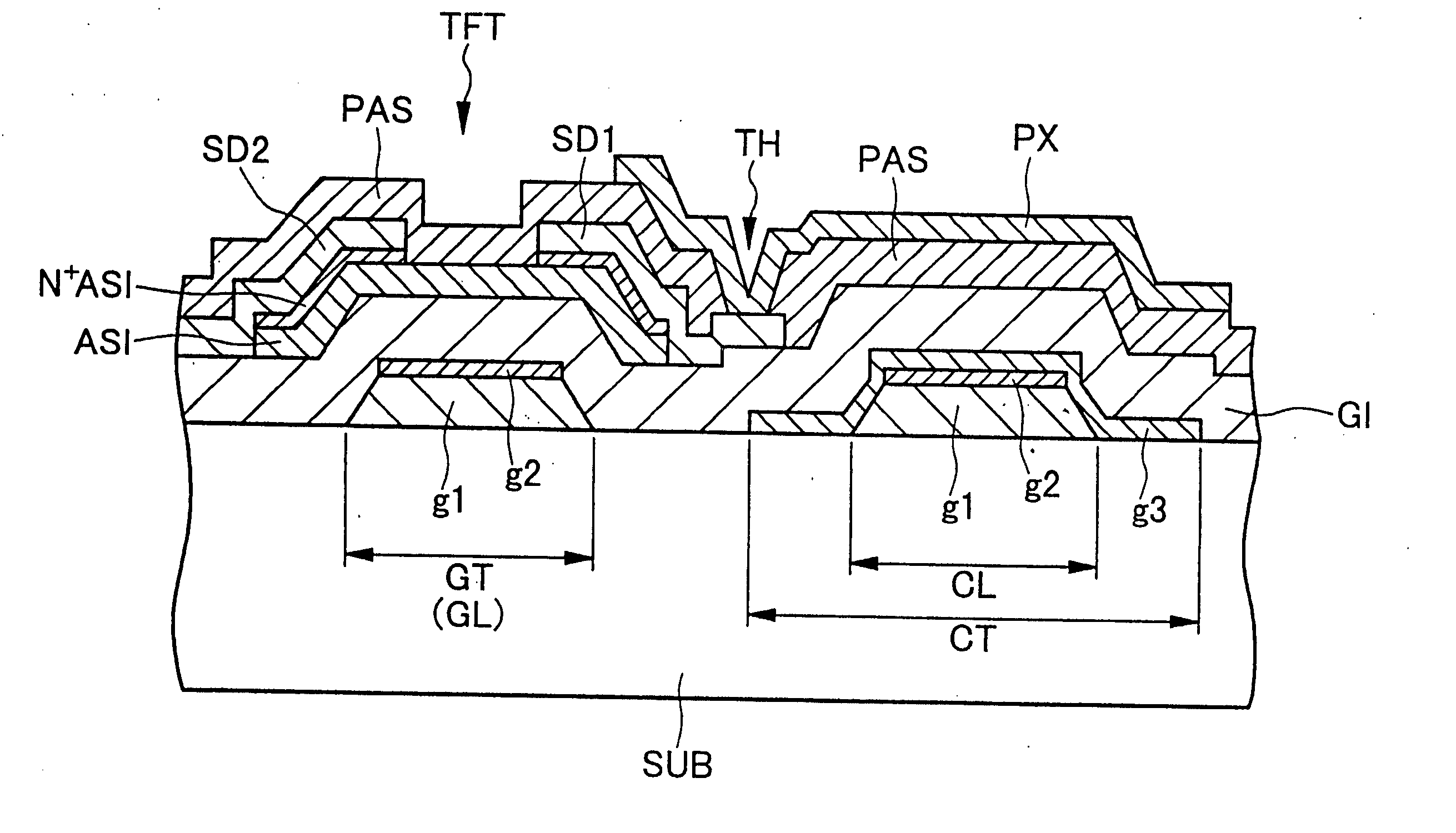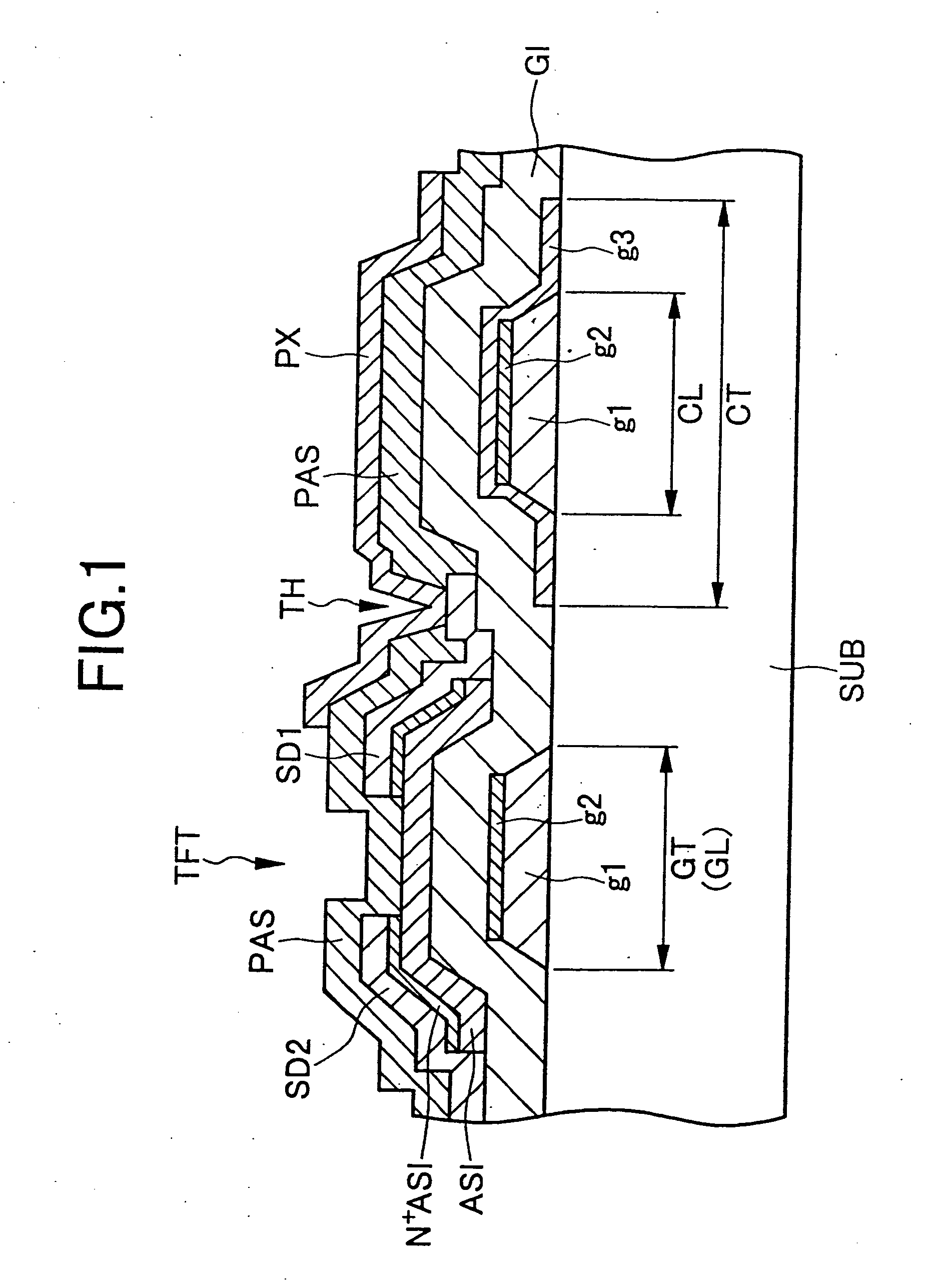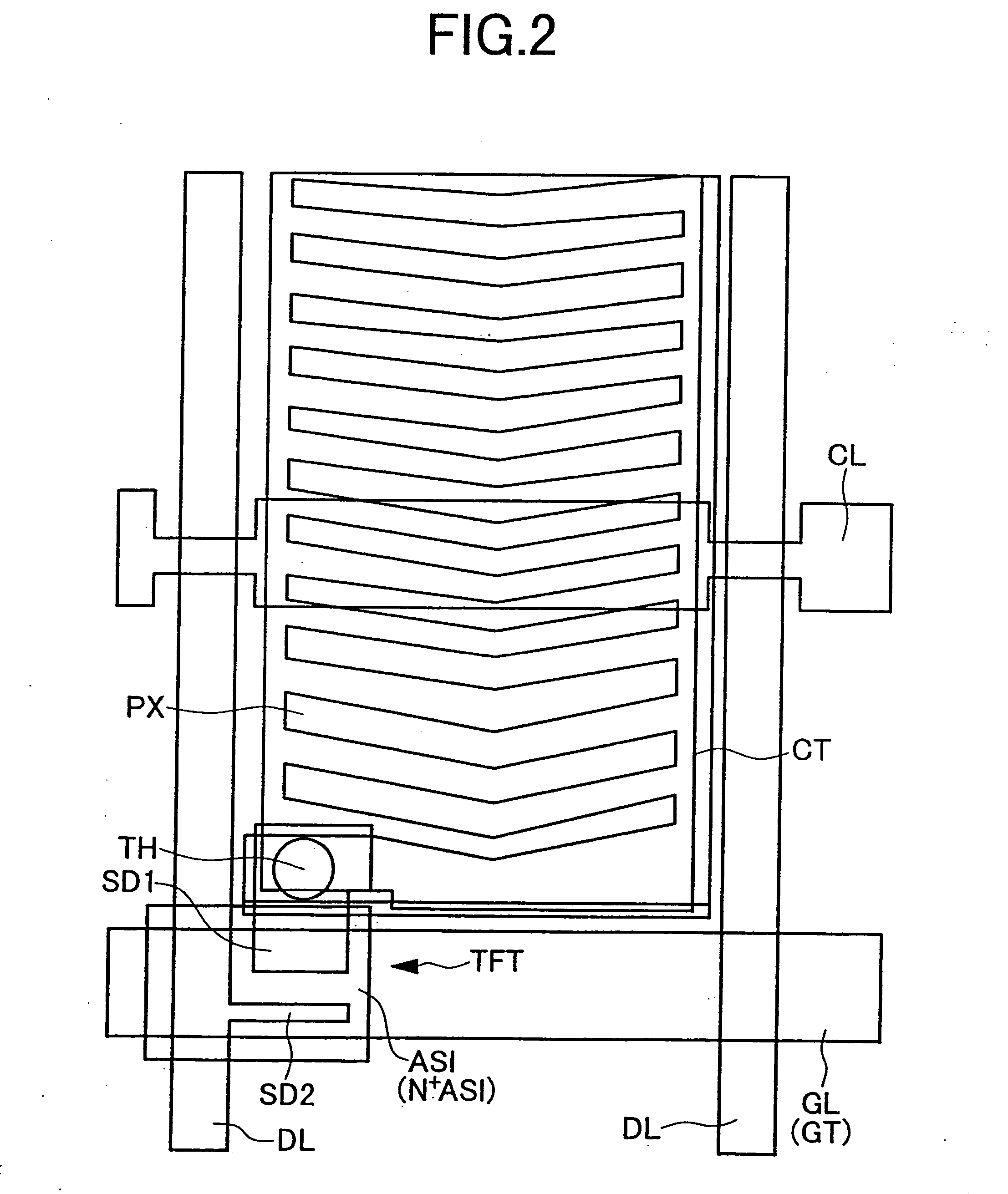Liquid crystal display device
- Summary
- Abstract
- Description
- Claims
- Application Information
AI Technical Summary
Benefits of technology
Problems solved by technology
Method used
Image
Examples
first embodiment
[0060]FIG. 1 is a diagrammatic cross-sectional view illustrating the construction of the essential portion of the liquid crystal display device according to the present invention, and diagrammatically shows a cross section of either one (a lower substrate) of insulative substrates disposed in opposition to each other with a liquid crystal interposed therebetween.
[0061] Referring to FIG. 1, a lower substrate SUB is suitably made of a glass substrate, and the inside surface of this lower substrate SUB has a gate line / electrode GT (GL) and a counter electrode / line CT (CL). The gate line / electrode GT (GL) is made of a stacked structure film of an aluminum alloy g1 and a molybdenum alloy g2, while the counter electrode / line CT (CL) is made of a stacked structure film which includes the aluminum alloy g1 and the molybdenum alloy g2 and is covered with a transparent conductive film g3 made of ITO. In FIG. 1, there are shown the gate electrode GT which constitutes a thin film transistor TFT...
second embodiment
[0100] In the second embodiment, the counter electrode CT has a plane shape, but it may be processed into a comb-teeth like shape in the case of ordinary IPS mode.
[0101] The above-described ITO or the like is used as the amorphous transparent conductive film g3. A major part of the aluminum alloy (Al-Nd) film g1 which constitutes the gate line GL and the counter line CL is covered with the alumina film g4 so that the surface of neither of the aluminum film g1 and the counter electrode CT does not directly contact an etching solution. Accordingly, a crystalline transparent conductive film may also be used as the transparent conductive film g3.
[0102] After the formation of the counter electrode CT, the semiconductor layer ASI and the semiconductor layer N+ ASI which serves as a contact layer, the source electrode SD1, the drain line DL and the drain electrode SD2 are formed as shown in FIG. 11.
[0103] Furthermore, after the formation of the insulating film PAS, as shown in FIG. 12, a...
third embodiment
[0105]FIG. 13 is a diagrammatic cross-sectional view illustrating the construction of the essential portion of the liquid crystal display device according to the present invention, and diagrammatically shows a cross section of either one (a lower substrate) of insulative substrates disposed in opposition to each other with a liquid crystal interposed therebetween.
[0106] In the third embodiment, ITO or the like is formed on the inside surface of a TFT substrate SUB1 as an amorphous transparent conductive film g3. The counter line CL is made of a stacked structure film which has a chromium, molybdenum or titanium film g2 as a base (a lower layer) and an aluminum alloy (such as Al—Nd) film g1 as an upper layer.
[0107] Both the chromium, molybdenum or titanium film g2 which is the lower layer constituting the counter line CL and the amorphous transparent conductive film g3 which constitutes the counter electrode CT have good contact characteristics.
[0108] During etching treatment for p...
PUM
 Login to View More
Login to View More Abstract
Description
Claims
Application Information
 Login to View More
Login to View More - R&D
- Intellectual Property
- Life Sciences
- Materials
- Tech Scout
- Unparalleled Data Quality
- Higher Quality Content
- 60% Fewer Hallucinations
Browse by: Latest US Patents, China's latest patents, Technical Efficacy Thesaurus, Application Domain, Technology Topic, Popular Technical Reports.
© 2025 PatSnap. All rights reserved.Legal|Privacy policy|Modern Slavery Act Transparency Statement|Sitemap|About US| Contact US: help@patsnap.com



